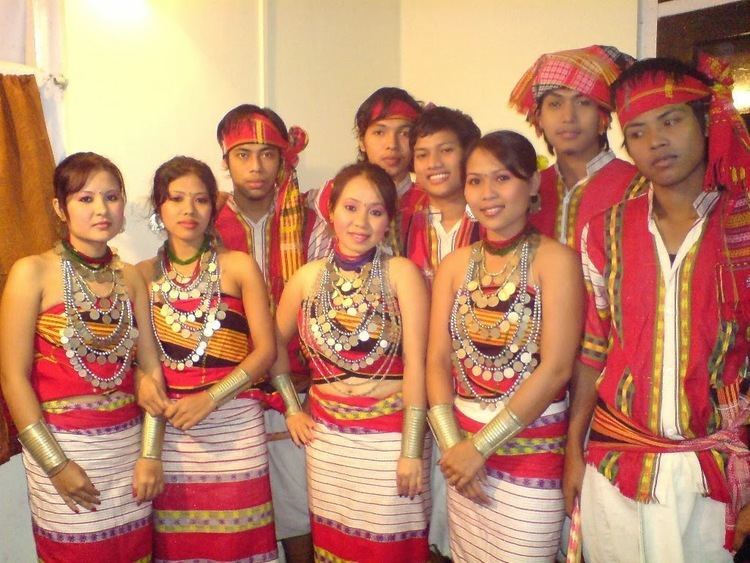 | ||
The Tripuri (also Tipra or Tipperah) people are the original inhabitants of the Kingdom of Tripura in North-East India and Bangladesh. The Tripuri people through the Royal family of the Debbarmas ruled the Kingdom of Tripura for more than 2,000 years until the kingdom joined the Indian Union in 1949.
Contents
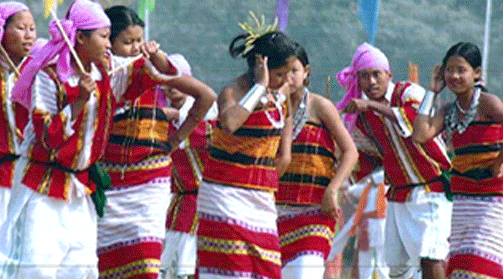
History

The people from Ttripura are considered part of the Tibeto-Burman ethnic group. Originally they migrated from near the upper courses of the Yangtze and Yellow Rivers in present-day Western China. They had left China long before the Sui dynasty came to power. At the time of migration they were animists. So it may be reasonably assumed that they migrated before 65 AD, the year Buddhism was introduced in China. The common reference to these people as "Kiratas" and "Cinas" in the early Sanskrit texts of India unmistakably indicates that they came down to the Assam valley long before the dawn of Christian era.
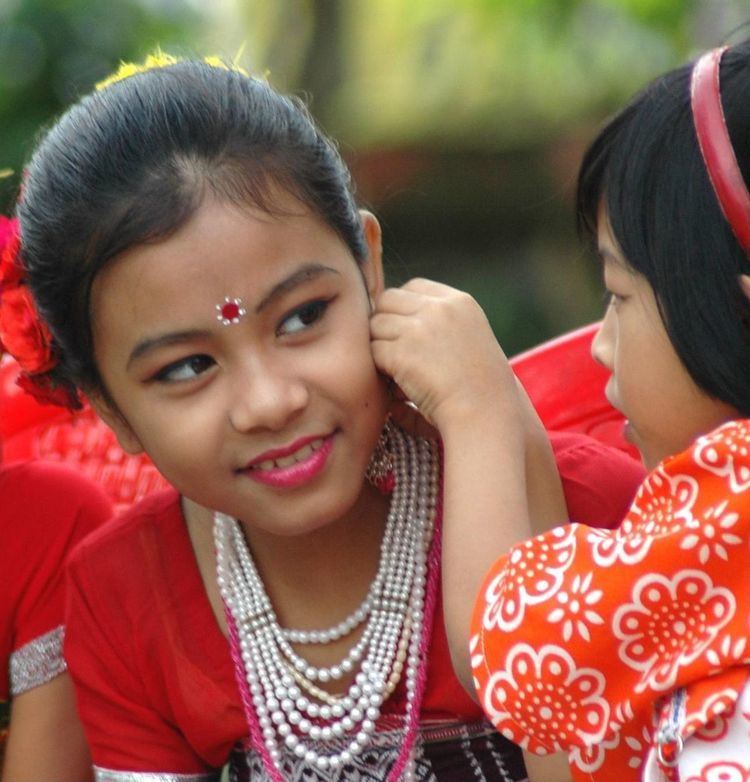
Tripuris entered their present country through its north-eastern corner, settled there and gradually expanded their settlement and suzerainty over the whole of Tripura. They were able to expand their influence as far south as Chittagong, as far west as Comilla and Noakhali (known during the British period as 'plains Tipperah') and as far north as Sylhet (all in present Bangladesh). The ruling dynasty passed through several vicissitudes of history and ruled Tripura for several centuries till 18th century, after which it became a colony of Britain. On 14 October 1949, Tripura was merged into the newly independent India.
Language
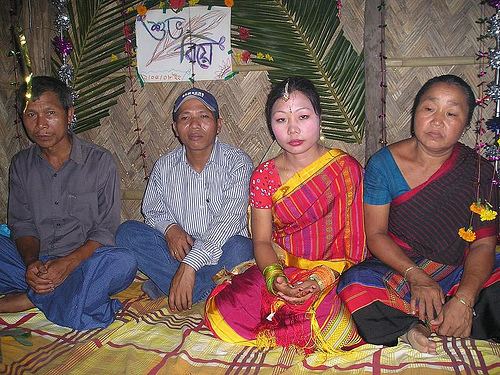
The Tripuri people mainly speak dialects called Kokborok, the standard dialect of the Debbarma tribe spoken around Agartala and the second official language of Tripura. There are estimated to be 1,000,000 speakers of the dialects of Tripuri in Tripura, others being in Mizoram and Assam in India and Nepal, Sylhet and Chittagong Hill Tracts in Bangladesh.
Religion
According to the 2001 census, majority of the Tripuri people are Hindus.
Some are also Christian.
Society
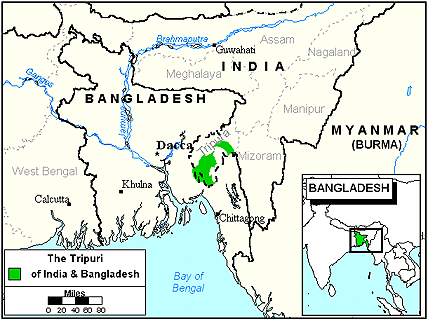
The indigenous Tripuri people comprises hill tribe communities viz., Tipra, Reang, Jamatia, Kaipeng, Noatia, Koloi, Halam, etc. who migrated to this land in successive waves. They grew in isolation and were sometimes subjugated by one another. Each community had its own elementary social and administrative organisation starting from the village level and up to the chieftainship of the whole tribe.
The tribes enjoy their traditional freedom based on the concept of self-determination. The relation between the king and the subject tribes was as Maharaja (king) of Tripura-Missip or liaison officer Roy or headman of the tribe – Sardar of chief of the village – the individual. Earlier, only the Debbarma or Tipra ethnic group was included in the Tripuri Kshatriya group. Later, the Raja included other groups like Reang, Jamatia and Noatia as well, in an attempt to foster a sense of kinship among the people under his reign.
The Tripuri people have a rich historical, social and cultural heritage which is totally distinct from that of the mainland Indians. Their distinctive culture – as reflected in their dance, music, festivals, management of community affairs, dress and food habits – has a strong base. Kokborok, the lingua franca of the 12 largest linguistic groups of the indigenous Tripuris and other dialects spoken in Tripura are of the Tibeto-Burman group and distinct from those spoken in India. There is no influence from those spoken by other peoples in the north-eastern region. The music composer father-son duo of S.D. Burma and R.D. Burma belong to the Tripura royal family.
The main Tripuri tribes are:
Daily living
The Tripuris live on the slopes of hills in a group of five to fifty families. Their houses in these areas are built of bamboo or ua as it is called in Kokborok and raised five to six feet height to save themselves from the dangers of the wild animals. Nowadays a considerable section of this community are living in the plains and erecting houses like the plains people, adopting their methods of cultivation, and following them in other aspects of life, such as dress, manners, and cosmetics. Tripuri women wear a scarp, called rignai, which reaches down just below the knee. They weave in their loin-loom a small piece of cloth, which they call risa, and they use this small piece of cloth as their breast garment.
Tripuri games and sports
Like many parts of the world the Tripuri has traditional sports. It is common in almost all the clans of Tripuri. They are called thwngmung in Tripuri. Nowadays these traditional sports are being abandoned gradually, as Tripuris are attracted to modern games and sports. But some of the sports still played and preferred in rural Tripura.
Examples include:
Issues
The Tripuri people have been reduced to a minority in Tripura due to the large scale migration of the Bengali people since Tripura kingdom joined India from 1949. From a majority of 80% population in 1901 census they constituted just 30% according to the 2001 census of India.
These has resulted in widespread insurgency and militancy in the state with groups such as TNV (Tripura National Volunteers), NLFT (National Liberation Front of Tripura) and ATTF (All Tripura Tiger Force), whose main motive is to secede from India and drive away the Bengali people and regain the independence of the kingdom.
